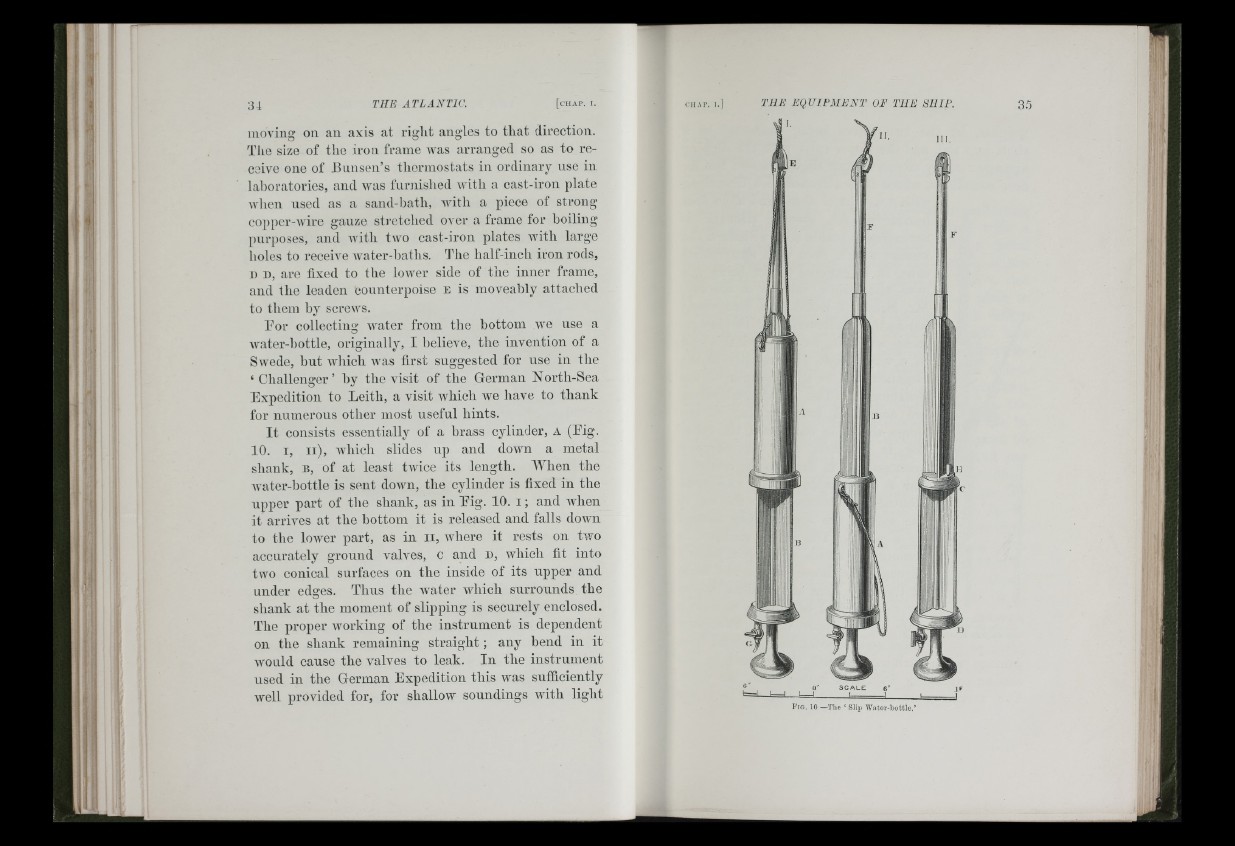
ii
moving on an axis at right angles to that direction.
The size of the iron frame was arranged so as to receive
one of Bunsen’s thermostats in ordinary use iii
lahoratories, and Avas funiislied Avitli a cast-iron plate
Avdien used as a sand-hath, Avith a piece of strong
copper-wire gauze sti'etched over a frame for hoiling
purposes, and Avitli two cast-iron plates Avith large
holes to receiv’c Avater-haths. Jdie half-inch iron rods,
1) D, are fixed to the loAver side of the inner frame,
and the leaden counterpoise e is moveahly attached
to them hy scrcAA’s.
Bor collectina: Avater from the hottom vve use a
Avater-hottle, originally, I helieve, the invention of a
Swede, hut Avhicli Avas first suggested for use in the
‘ Challenger’ hy the A’isit of the German North-Sea
Expedition to Leith, a visit Avhich we have to thank
for numerous other most useful hints.
It consists essentially of a brass cylinder, a (Eig.
10. I, ii), AA’liich slides up and dowm a metal
shank, b, of at least tAvice its length. When the
Avater-hottle is sent doAvn, the cylinder is fixed in the
upper part of the shank, as in Eig. 10. i ; and w’hen
it arrives at the bottom it is released and falls down
to the low’er part, as in ii, Avhere it rests on two
accurately ground valves, c and d, Avhich fit into
two conical surfaces on the inside of its upper and
under eds-es. Thus the water O Avhich surrounds the
shank at the moment of slipping is securely enclosed.
The proper Avorking of the instrument is dependent
on the shank remaining stra igh t; any bend in it
Avould cause the valves to leak. In the instrument
used in the German Expedition this was sufiiciently
well provided for, for shallow soundings with light
•H
F ig . 10 —The ‘ Slip Water-bottle.’